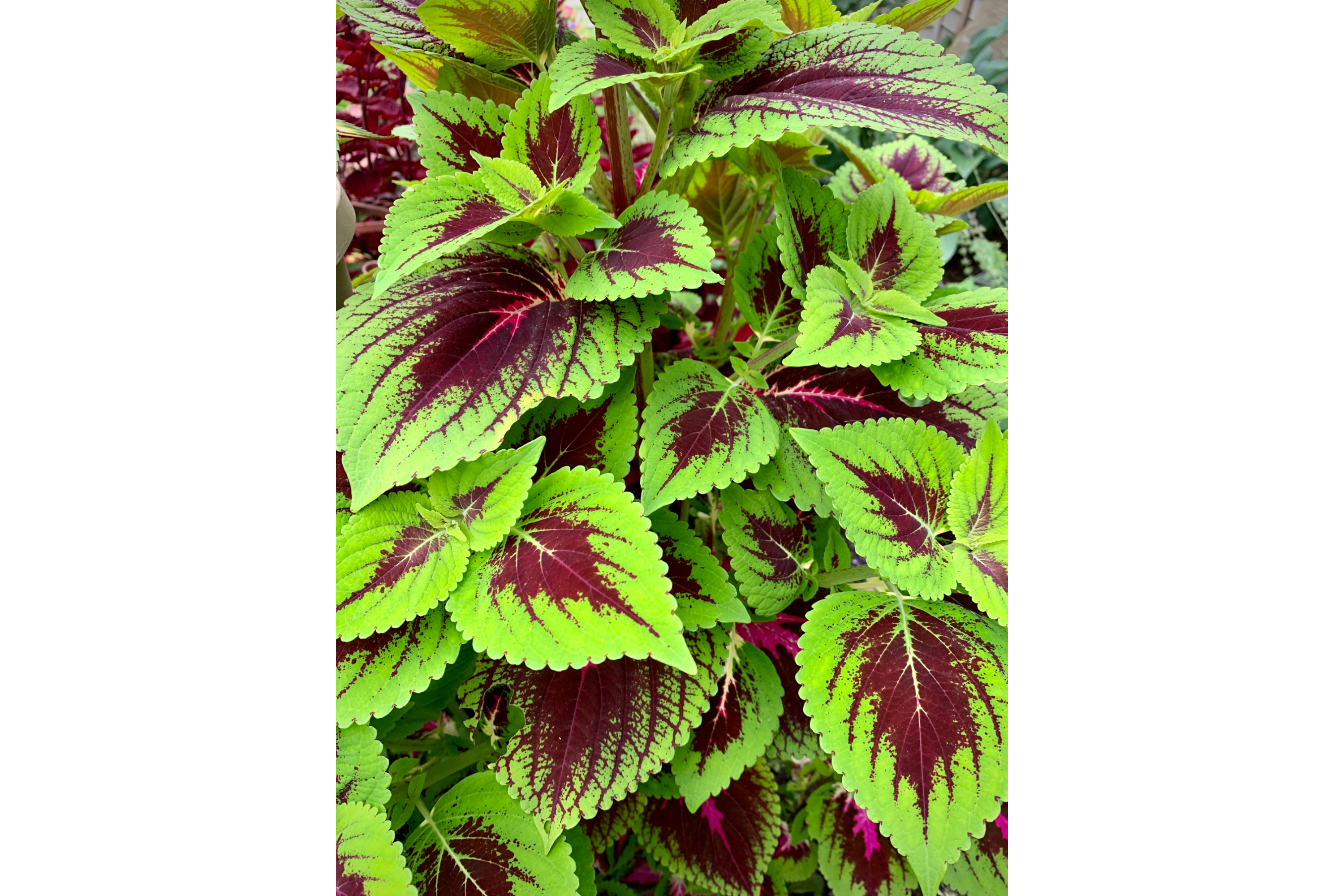Coleus
(Coleus scutellarioides)

Description
Coleus scutellarioides, commonly known as the painted nettle or coleus, is a plant species belonging to the family Lamiaceae. It is native to Southeast Asia, specifically to parts of Malaysia and Indonesia. Over the years, Coleus scutellarioides has become a popular ornamental plant due to its attractive foliage and ease of cultivation. In this article, we will explore the taxonomy, morphology, habitat, cultivation, and propagation of Coleus scutellarioides. Taxonomy The scientific name of Coleus scutellarioides has gone through several revisions. It was originally described by Carl Linnaeus in 1763 as Ocimum scutellarioides, and it was later moved to the genus Coleus by Ferdinand von Mueller in 1860. In 2019, a taxonomic revision of the genus Coleus led to the reclassification of several species, including Coleus scutellarioides. The plant is now known as Plectranthus scutellarioides (L.) R.Br. ex Poir. Morphology Coleus scutellarioides is a herbaceous perennial that can reach a height of 1 meter. The leaves are arranged oppositely on the stem and are ovate to lanceolate in shape, with a toothed margin. The size, shape, and color of the leaves vary widely depending on the cultivar. The most common leaf colors include green, purple, red, pink, and yellow, often in combination with each other. Some cultivars also have variegated or spotted leaves. The flowers of Coleus scutellarioides are small and inconspicuous, usually blue or lavender in color. Habitat Coleus scutellarioides is native to tropical regions of Southeast Asia, where it grows in humid forests and along riverbanks. It prefers well-draining soil and partial shade, although it can tolerate full sun with adequate watering. In its native habitat, Coleus scutellarioides is used in traditional medicine to treat various ailments, including respiratory problems, fever, and digestive disorders. Cultivation Coleus scutellarioides is a popular ornamental plant that is easy to grow and propagate. It is usually grown as an annual in temperate climates, although it can be grown as a perennial in tropical regions. The plant prefers well-draining soil and partial shade, although it can tolerate full sun with adequate watering. Overwatering should be avoided, as it can cause root rot. Coleus scutellarioides can be propagated by stem cuttings, which should be taken in spring or early summer. The cuttings should be about 5-10 cm long and should be rooted in a well-draining potting mix. Once rooted, the cuttings can be transplanted into the garden or into individual pots. Uses Coleus scutellarioides is mainly grown for its attractive foliage, which is used in ornamental plantings and as a houseplant. The plant is also used in traditional medicine in Southeast Asia to treat various ailments. Some studies have shown that Coleus scutellarioides contains compounds that have potential pharmacological properties, including anti-inflammatory, antimicrobial, and antioxidant activities. Conclusion Coleus scutellarioides is a popular ornamental plant that is easy to grow and propagate. It is native to Southeast Asia and is grown for its attractive foliage, which varies widely in size, shape, and color. The plant prefers well-draining soil and partial shade, although it can tolerate full sun with adequate watering.
Taxonomic tree:







